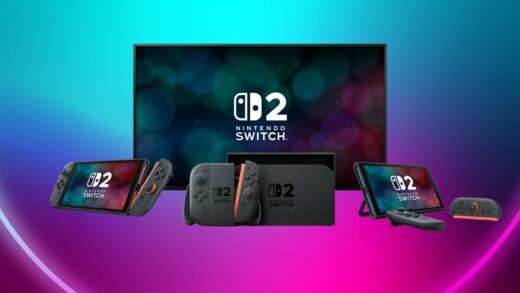Last week Sketchfab, the 3D content hub, shared an exciting milestone — the company has just crossed 1 billion cumulative pageviews. Taken with the community’s growth — they just surpassed 2 million users, as well as the 200 million people that have experienced content via Sketchfab more broadly, this makes it one of the platforms with the largest reaches for interactive 3D content on the web.
With Google’s Poly turning one and Microsoft’s Remix 3D turning two, it’s an interesting moment to reflect where we are in the trajectory of the 3D web.
Alban Denoyel, the CEO of Sketchfab has watched the industry and community evolve in the six years since he founded the company. In an interview for Flu I sat with Alban and we got into the history of the business and how he’s built a team between Europe and the U.S., what the company has learned from Youtube and why they are pursuing a distributed content strategy. Alban also shared details on how power creators are using the platform to monetize content, the powerful role 3D plays in cultural heritage, and the importance of figuring out standards and formats in 3D. An excerpt of the conversation can be found below and the full transcript is on Medium.
AMLG: Our guest today is Alban Denoyel. He is the founder and CEO of Sketchfab a hub for 3D content on the internet. The company was founded in 2012 and is based between New York and Paris. I haven’t caught up with you for some time, it’s great to see you again. I believe you had a baby girl in the last few months?
AD: Three months ago.
AMLG: Congratulations. Maybe we can start with a bit your history, how you got into graphics, came over from France for Techstars and the origins of the company.
AD: Sure. We started the company back in 2012 in Paris. I actually had a business background so for the first two years of the company I was the only non-developer in the team. I do sculpture as a hobby and was commissioned to make a large piece. I was trying to figure out what was the most efficient way to make it. That’s how I heard about 3D printing. Back in 2011 in France it was very new. I found it fascinating and was telling everybody about it — “3D printing, that’s the future if you haven’t heard about it.”
AMLG: Clay sculptures?
AD: Initially wood sculpture, then for this piece it had to be clay because it was too big for wood and I had to do a mould. A lot of that would have been easier if I had known about 3D scanning and all that stuff. Then in 2012, I left my job because I wanted to start a company. I was trying to meet as many people as possible. I went to a party where I was preaching the 3D printing gospel again. Someone told me, hey you should go talk to this guy back there he’s a 3D guy. So I went to Cedric who is now my co-founder and CTO. He had never heard about 3D printing. But he told me, “I’ve been working on this prototype around 3D. If you are interested I’d be happy to talk more. Let’s have lunch.” So we agreed to have lunch the next day. Then he showed me what was essentially the first web-based 3D player to have ever been built. He had been a 3D programmer in the video game industry for 15 years and was hired by Mozilla to make the first demo of WebGL for the launch of Firefox 4 back in 2011. He built the first WebGL framework — so WebGL is now standard but wasn’t standard back then to display 3D graphics in the browser. He showed me the prototype which was really just an upload button, you uploaded a 3D file and got back a URL and saw the 3D file in your web page. No user interface, no nothing.
AMLG: So he had built the core idea already a bit, tinkered with it.
AD: Yeah. He kind of built it as a tool for himself. He was working with 3D artists in the gaming industry and they were sharing screenshots of their work, which sucked. He said hey maybe I can find something better. So he built it for himself and had told nobody about it.
AMLG: Did you convince him to leave his job?
AD: He had already moved to full-time freelancing around WebGL. He was super happy as a freelancer, he had no intention to build a business. And I initially had no sense as to whether this would be a sustainable idea. So I just started helping out on the side. It immediately took off because we were the first platform to do that. Then our third co-founder Pierre-Antoine joined us a few months after. We quickly realized we’re the first mover in the space. And that if we wanted to reach our ambitions and find funding and get partnerships with the big tech guys we had to move to the U.S. fast. If you look at other media platforms — we had DailyMotion for video in France, we had Deezer for music. They both got doubled by U.S. companies because it was harder back then to move to the U.S. So very early on I started applying to the U.S. accelerators. We first got into Web Forward which was Mozilla’s accelerator, so we spent Q4 of 2012 in San Francisco and then back to Paris. We knew we had to go back to the U.S. as fast as possible and we applied and got into TechStars New York in spring 2013. So that’s how we came back.
AMLG: Ok. So to get into what is Sketchfab—it’s essentially a platform for creators to publish and users to consume 3D content. There’s an embeddable player that displays 3D content across the web. So much of the 3D landscape has changed in the six years since you started the company. What is the biggest difference now?
AD: There’s been shifts on the two sides of the platform, both creation and consumption. When we started there were only professional people creating 3D content. You needed advanced professional tools like 3ds Max or SolidWorks and AutoCAD. The crowd of people who could become Sketchfab users was limited to 20 million or so 3D professionals. Then on the consumption side, there was no VR or AR. 3D printing was very early and there were fewer ways to consume the content. Six years later — the iPhone 10 has a depth sensor, which means you can do 3D capture on the spot. That means that anyone with a smartphone will become a 3D creator moving our target user base from 20 million to 2 billion people. Then on the consumption side, 3D used to be meant only for background work, back office stuff like manufacturing. A lot of ads are done with 3D assets but the result is 2D and its the same for movies. Whereas today you can consume stuff that is made in 3D in a 3D form which is VR or AR. So the appetite for 3D content is exploding and there are more and more ways to use and leverage that content. So it’s become increasingly important to be able to share and find that content.
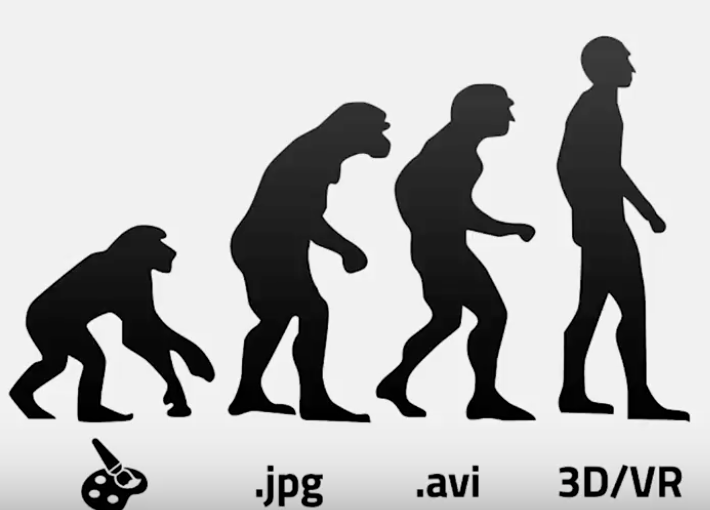
AMLG: When it comes to those two sides of the marketplace it feels like on the consumption side we’re at this turning point with VRAR, that we’re about to have all these different ways to consume. But the creation side still feels like a bottleneck. I mean I’m trying to learn Unity so maybe that’s my own personal struggle. But when we talk about how creation has evolved, we started with cave paintings and then went to regular paintings, then photography, then video, and now we’re going to 3D. We’re starting to learn how to capture in 3D.
You mentioned Intel RealSense. Obviously, there was a lot of excitement with Google Project Tango — RIP. I still have my Lenovo Phab. I was very excited to get it, it took such a long time to come. But I was hoping we’d see more uptick in capture and content growth from that. My understanding is that the Tango team rolled into AR Core anyway so that’s been a positive. That’s capture. There’s also Tiltbrush and other tools for creating. But overall, is there still a bottleneck?
AD: It’s definitely true that for the average person there aren’t a lot of seamless ways to create content. But the thing is you don’t need a crazy depth sensor to make 3D capture. Most of our 3D captures on Sketchfab are coming from photogrammetry. It’s an older technique stitching a ton of images together. The downside is that it’s much less seamless than depth sensors because you have to take a lot of pictures. But the upside is that the result looks nicer because the tech is more evolved. I would say about half of our uploads are coming from 3D capture. More and more is coming from drones. We see new use cases for 3D captures every day, we see new solutions coming to market every day. I guess for the outside world it may seem like a bottleneck. But for us, because we have become the go-to place to publish that content, we see a lot of volume.
AMLG: In various talks you’ve said that 3D is eating the world. I think that’s true it’s just, along what timeframe? Is it nibbling, is it taking a large chomp, where are we in that… What do you think will be different about 3D and where are we in format standardization?
AD: It’s important to make a differentiation between the formats and the platform to host it. There’s been a lot of technical discussions around which 3D format should be the holy grail of 3D formats. It’s an ecosystem that is much more fragmented than sound or video. But even if we do get to an agreement around the best 3D format you still need a platform to host it, publish it, share it, embed it, display it. That’s where we come in and where YouTube comes in for video. Today you can display a video on a web page without Youtube. It’s part of any normal html5 markup. We’re going to get to the same state for the 3D world.
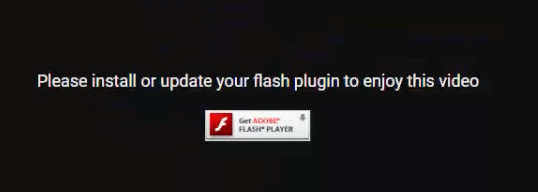
AMLG: I remember the days of “please make sure you’ve downloaded Adobe Flash plugin” — like, what.
AD: Yeah so Youtube made it easy and then reached critical mass, and at that point there was no reason not to use Youtube because it made it easier. That’s what we want to do.
AMLG: And you’ve done that with the embedded API right? You have that built-in capability now, to view Sketchfab content across the web? Through your partnerships.
AD: Yes. We’ve spent a lot of energy on that. The main difference when it comes to consuming the format is it’s a very different medium. Even if now we’re able to support many volumetric movies which are closer to what a video is, a lot of the content is more like objects or scenes. And while a lot of it makes sense to be consumed as is, there are a number of assets that make more sense combined or reused in a different context. So maybe it’s just because the Web part of the ecosystem is too early to do this efficiently. But what we’ve come to realize is that while YouTube is fully optimized for content being consumed within the Youtube player, we’re just starting to see that there is more value in letting the content go, letting it leave the Sketchfab player to be reused in different contexts.
AMLG: So it’s distributed consumption rather than a destination.
AD: Exactly.

AMLG: Which is why it’s such a feat. I saw pinned to the top of your Twitter that “it took six years but I’m proud to say we’ve been able to partner with Google Apple Facebook Amazon and Microsoft.” Slow but steady. I can’t imagine what kind of work that took. I guess it comes back to what you were saying with WebGL. Curious to get into that — it’s really the first web standard that allows you to display 3D graphics in a browser without a plugin. Mozilla has been driving that and you have DNA from Mozilla in your team. What is it about Mozilla? I mean they’re a free open source browser, but why are they such a critical role in this ecosystem? They seem very forward thinking.
AD: They’ve always been pushing for content openness and distribution. A lot of previous formats were quickly grabbed by large tech companies and then locked into proprietary formats like Flash. So they felt this shouldn’t happen for the 3D world. What’s interesting is that they pioneered WebGL back in 2011 2012 and they did it again with WebVR WebAR webXR. They were actually the first browser — Firefox — to launch with built-in WebVR support out of the box a few months ago, ahead of Google and any other browser which is impressive.
AMLG: So how does this all relate to WebVR?
AD: Well VR is just another screen, another way to consume the content. We are the repository and then you can consume it on mobile on desktop in VR in AR. What I like about WebVR is that instead of having people needing to go to one of the VR destination sites like the Oculus store or the Steam platform — people don’t have the habit to do that. We’ve been betting heavily on the concept of embedding content anywhere on the Web. Our content is traveling across e-commerce websites, news sites and so on. Then you run into the Sketchfab player wherever you are — in your Facebook feed, in a tweet. You can consume it the way you want. If you have your VR headset plugged in you can just jump into it in VR without having to worry about anything else.
AMLG: So it’s hardware agnostic right? And the API works for this. That API essentially gives developers access to your 150,000 3D models?
AD: So WebVR lets you consume our entire library of 3 million plus assets straight from our player. Our player is VR enabled for the web. And then our download API is a pipeline to get the content outside of our player to be used natively inside any other — well it can then re-end into WebVR but in another platform —
AMLG: I may have to draw a diagram for listeners. But what you’re saying is you’ve made it really easy for people to access.
AD: Yeah to search — the concept is a search bar for the 3D world. Just like when you are in Photoshop or even Google Slides, if you want to get content, they have integrations with guys like Shutterstock or Getty or Fotolia . It’s just a library of 2D stuff. We want to do the same thing for the 3D world.

AMLG: To get into the numbers and give listeners a sense, as of July you have a community of over a million and a half users who’ve published close to 3 million 3D models, which I believe makes Sketchfab the largest library of 3D volumetric content online?
AD: We’re close to 2 million users now and we just passed 3 million assets.
AMLG: Can you get into uniques per month — you said a few months ago maybe five million. I’m guessing it’s somewhere near 10 million now?
AD: Yeah we’re in between that.
AMLG: OK. I want to get a bit more concrete around the types of content. Initially you were targeting 3D artists, animation, gaming studios — it seems like over time use cases and content types are much broader than you thought?
AD: We’ve had this kind of tension, in terms of market and even in terms of co-founders. I wanted to get traction and critical mass and volume and go for like Youtube model. My co-founders were more like, we need to serve the artists and make a solution for the best content, and having the best content will reflect positively on our platform. So do we go after less great content? We quickly became the market leader and so we decided we might as well go for every type of 3D content. So today we managed to grab the high end of the market. If you go to Sketchfab, the curated part is really high-end stuff that takes a month or six months to build. Then we have the long tail of things that are drawn by kids in Tiltbrush or 3D capture. Like I make portraits of my son, it’s not great content but it’s great content for me.
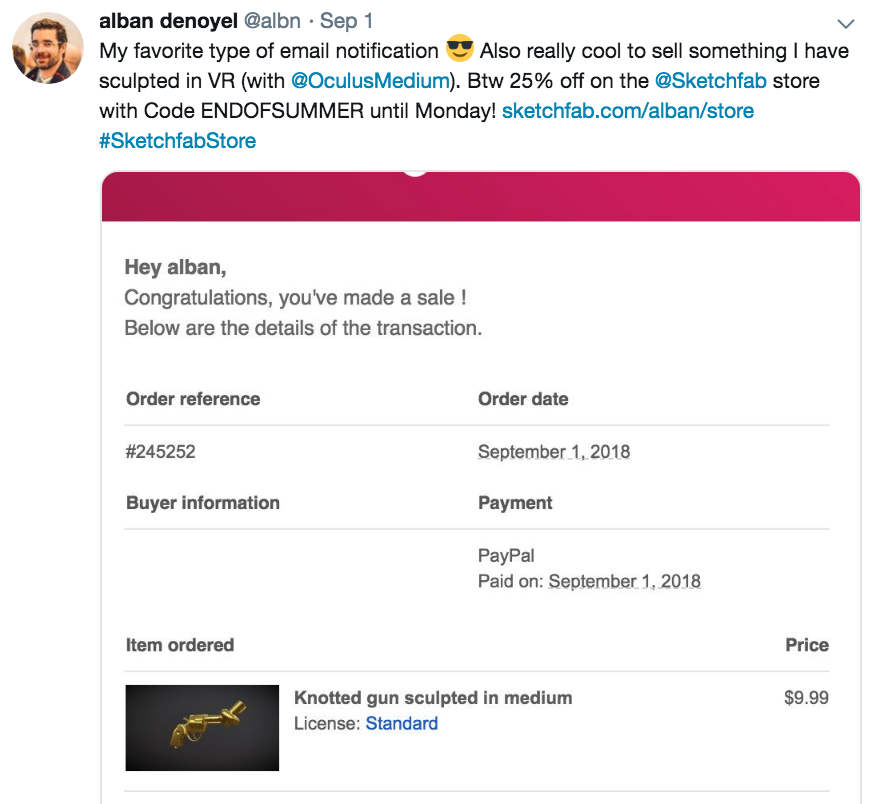
It seems like shoes come up a lot. I saw your Balenciaga partnership for their trainers, it’s high-quality stuff. You’re into shoes and have uploaded shoes. What is it with 3D shoes and e-commerce, and when is e-commerce 3D going to start penetrating for the average person?

AD: It always sounded crazy to me that when you buy your product you go to the product page and then you have 10 pictures of 10 angles of the product. We can do better than that. Then, of course, you think about AR and VR and the day that we will have Apple AR glasses on our head. Every brand will need a virtual version of their products. The good news is that most brands manufacture physical products, and they start with a 3D design because they need to manufacture it. So a lot of them already have 3D files of what they sell. But most of this content doesn’t look good and isn’t meant to be consumed that way.
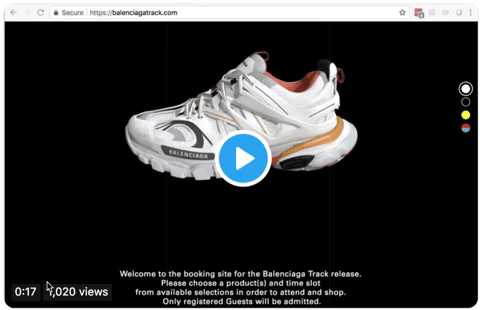
We want to help 3D get into e-commerce and we’re starting with verticals where 3D is the most relevant and already present and accessible. Those categories are typically things like furniture. We work with brands like made.com. Shoes is an area where 3D is very present in innovation, just to design a shoe, and it’s also easy to 3D scan a shoe and has a great result. Often we combine both. I guess I also have a bias because I’m a shoe person —
AMLG: A sneakerhead.
AD: Yeah. I really want to get all the, well we actually already work with Adidas, Nike, New Balance and Crocs — I want to work with the shoe brands. It also seems like the type of product like you care more about seeing in 3D than a T-shirt. It’s more expensive. And then there are so many differences from one shoe to another. So many components and technical features.
AMLG: Do you think any businesses are proving out an ROI with 3D yet when it comes to e-commerce?
AD: Well we’ve started experimenting with free advertising, partnering with Google and programmatic networks to get our player to run 3D ads. We’ve seen a much better ROI than 2D ads. Like for a jewelry brand we did a case study. But to be honest, when I pitch an e-commerce brand I’m not pitching the ROI angle first. It’s a byproduct and I expect it to be ROI positive. But 10 years from now you will need to be ready for when virtual content is seamlessly shared with physical content. So what do you do today to be ready for that?
AMLG: Get ahead of the curve.
AD: Yes and today it starts with a web-based player of your products on an e-commerce site, and then tomorrow, I don’t know what the user interface is going to be for AR VR —
AMLG: Why am I not seeing more 3D on Amazon . Are they going to do it?
AD: That’s a long conversation but yes they’re working on it.
AMLG: I would think so. They’re usually ahead of these things. I guess to get more into a random question for you— if you could go back in history and 3D capture any human or any place, what would it be?
AD: Well my last grandmother just passed away. She is the only one I was able to capture in 3D four years ago because she came to visit me in New York. It sounds silly but I would love to have 3D portraits of all my grandparents. It’s as close to who they were and who they are.
AMLG: Yeah it’s powerful stuff.
AD: I take 3D portraits of my kids. It sounds silly —
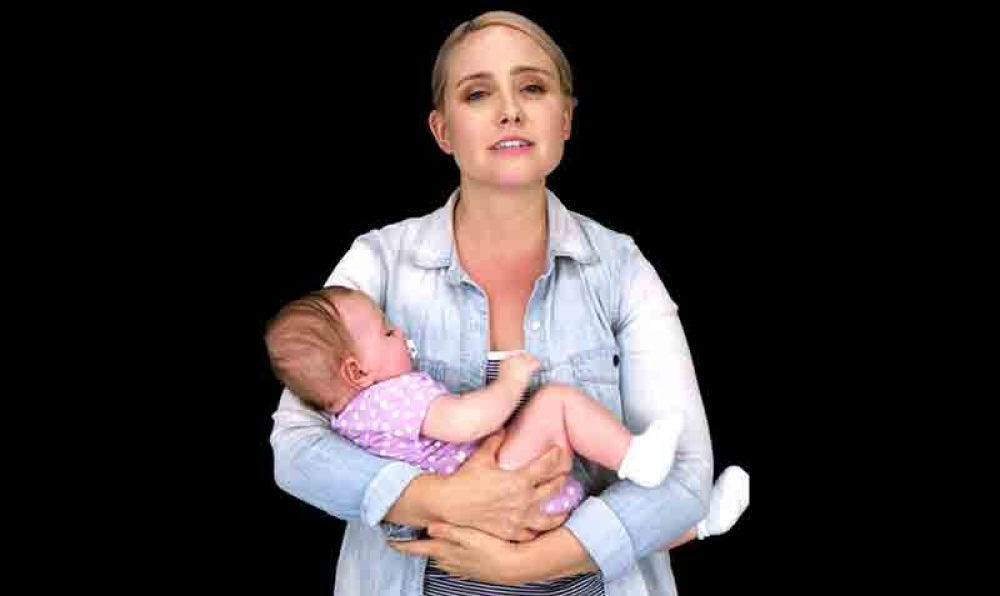
AMLG: No not at all. We have a company called 8i and one of the first things they did was capture a mother holding a baby. It’s been one of the most popular assets. She came back a year later and stepped into herself again to hold the baby. She couldn’t believe how much her child had grown, stepping back into her own hologram and holding the baby. It was an interesting moment. That’s what they’ve found in capturing these human moments. I’d be curious to hear what was the first thing you ever uploaded or sold on Sketchfab?
AD: The first asset I sold was a 3D capture of a chocolate croissant. It sold for $4.99. What’s interesting is that first, we had no idea if 3D captures would sell on our store because traditionally it’s an industry driven by high-end computer graphics and 3D captures are usually not optimized, the content doesn’t always look as good. So I was not expecting to sell it. Also, I had no idea who would have use of a virtual version of a croissant that costs more than the actual thing. Then I did a bit of research. It turns out it was an entrepreneur building an AR app to give nutritional advice on food. He’s doing machine learning on virtual versions of foods, so he is able to look at any actual food piece and say, hey —
AMLG: I think I’ve come across this guy. I remember someone doing this.
AD: There are probably several people doing that. But what’s interesting is, don’t assume that things won’t sell. Because you never know how they are going to be used. It was just a great surprise for me and for Sketchfab as a platform.
Source : One billion 3D views and counting

